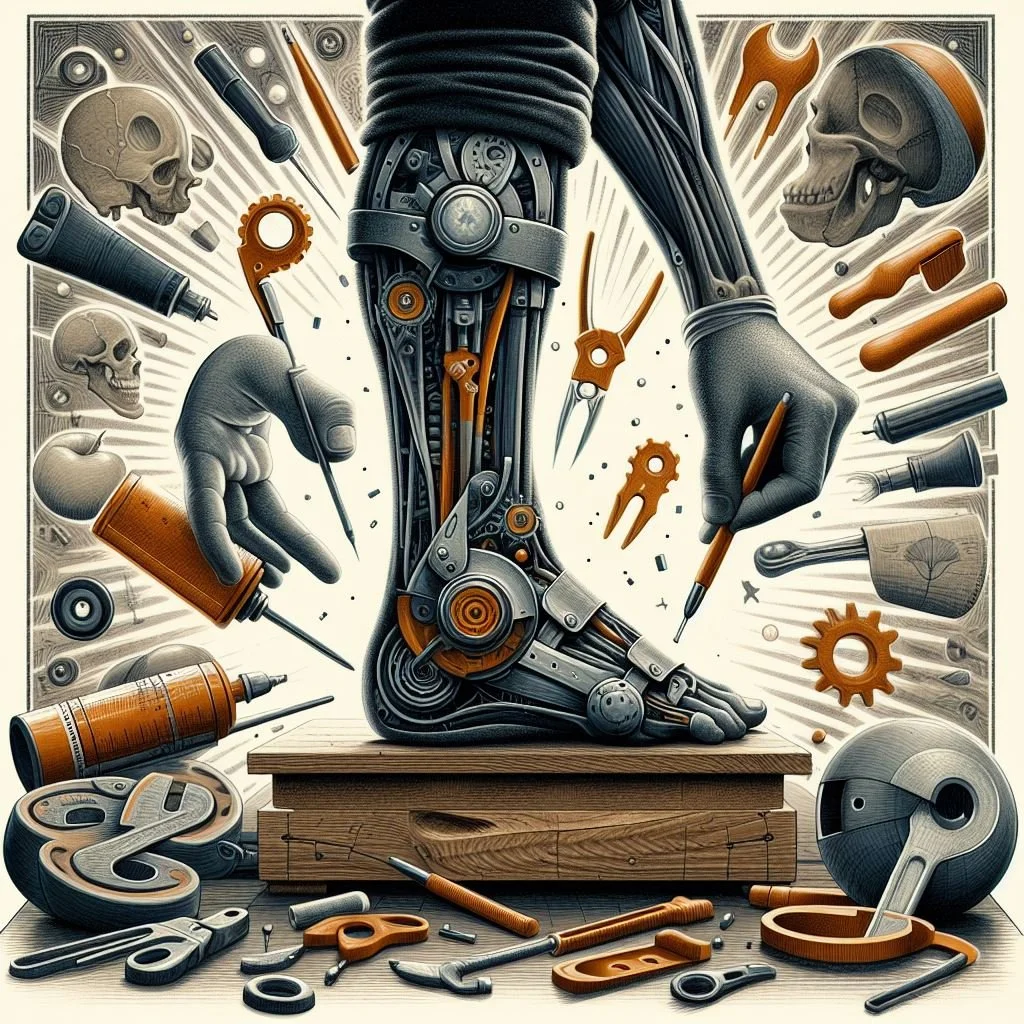In the realm of healthcare, orthotics stands as an unsung hero, wielding the power to enhance mobility, restore functionality, and transform lives. These often-understated devices play a pivotal role in addressing a myriad of musculoskeletal conditions, ushering in a new era of personalised care and mobility support.
In 2023, the UK's orthotic industry demonstrates resilience and adaptability, embracing digital technologies for precision and personalisation.
Digital advancements, like 3D scanning and computer-aided design (CAD), have streamlined production, creating bespoke orthotic devices tailored to individual anatomies. This shift towards digitalisation ensures enhanced accuracy and comfort for patients.
An emerging focus on sustainability sees the industry exploring eco-friendly
Orthotic devices, such as ankle-foot orthoses (AFOs), are often used to help prevent and treat contractures, which are conditions that cause permanent shortening and tightening of muscles, tendons, and ligaments. In this article, we will explore the efficacy of these orthotic devices in the treatment and prevention of contractures.
Knee osteoarthritis is a common degenerative condition characterized by the breakdown of cartilage in the knee joint. This can lead to symptoms such as pain, stiffness, and decreased range of motion. As the condition progresses, it can also lead to the development of bony growths called osteophytes and the formation of fluid-filled sacs called cysts.
Pronation is a natural movement of the foot that occurs during weight-bearing activities such as walking or running. It is the inward roll of the foot that occurs when the foot hits the ground. Pronation is necessary for the foot to absorb shock and adapt to the surface of the ground, however, excessive pronation can lead to a number of musculoskeletal problems such as plantar fasciitis, shin splints, and knee pain.
Leg length discrepancy (LLD) is a condition in which one leg is longer or shorter than the other. This can occur as a congenital condition or as a result of injury or disease. LLD can cause pain, discomfort, and difficulty with walking and other physical activities. It can also lead to a range of musculoskeletal problems such as lower back pain, hip pain, and knee pain.
Ankle dorsiflexion insufficiency, also known as foot drop, is a condition in which the muscles that lift the foot are weak or paralyzed, causing the foot to drag or drop when walking. This can result in difficulty lifting the front part of the foot and can cause the person to trip or stumble. Drop foot can be caused by a variety of conditions, including nerve injuries, spinal cord injuries, and certain diseases such as multiple sclerosis and ALS.
Lisfranc injuries, also known as Lisfranc fractures or dislocations, are a type of injury that affects the bones and joints in the midfoot. These injuries occur when the bones in the midfoot are damaged or dislocated, often as a result of a high-impact or twisting injury. Symptoms of Lisfranc injuries include pain and swelling in the midfoot, difficulty bearing weight on the affected foot, and difficulty moving the toes.
Plantar heel pain is one of the most common foot conditions seen in clinic with plantar fasciitis being a regular diagnosis. Night splints are often cited amongst the regular treatment options for plantar fasciitis in both the medical literature and in patient focussed online articles and blogs. This systematic review aims to evaluate the effectiveness of this conservative treatment in the available literature.
Tarsometatarsal joint injury or eponym “Lisfranc dislocation” is prevalent in medicolegal practice and often has profound effects on mobility. The linked article offers a useful review of the functional anatomy, aetiology, diagnosis, treatment objectives and prognosis...
I think adherence to the Root model of foot assessment/function has naturally waned amongst the Orthotists that I know but I do seem to note a more hardcore element amongst Podiatrists. I'd implore all to read the full paper, a link to which is below
Today we completed a carbon fibre arm brace for one of our Brachial Plexus clients. We integrated a safe yet versatile ball and socket component for handle bar attachment...
It's been a sporting week in clinic. An aspiring Discus athlete took delivery of a carbon spring blade AFO. This is a unique design, adapted from the IDEO concept but produced for a 1/3rd of the cost. Designed by me and manufactured by carbon specialists Osic



















In the realm of orthotics, materials play a pivotal role in defining the comfort, functionality, and efficacy of these transformative devices. Over time, the evolution of materials used in orthotics has been a testament to innovation, paving the way for enhanced performance, durability, and patient satisfaction.